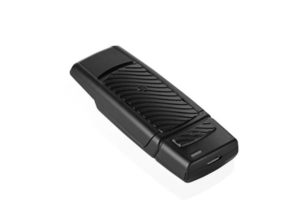An Assistive listening device (ALD), or hearing assistance technologies (HATs), are pieces of equipment designed to help people who are hard-of-hearing. ALDs can be classified into three categories:
ALD for Face-to-face communication and the reception of broadcast media
Poor listening environments are annoying to most of us, but the effect they have on hard-of-hearing people is much more severe. Hearing aids amplify not only desired sounds but also noise.
In contrast, ALDs are designed to reduce the effects of distance, background noise, and reverberation. ALDs pick up the desired sound and send it directly to the listener’s ear minus the negative effects of distance, background noise, or poor room acoustics.

This table microphone is an ALD. Users can enjoy group settings like family gatherings or noisy restaurants. Eight built-in microphones detect the primary speaker’s voice and stream it to the their 2.4 GHz hearing aids.
Telephone ALD
The voice of the person at the other end can be made louder and easier to hear for the hard-of-hearing person. This can be done through a special telephone with a built-in volume control or through an attachment to a standard phone. The telephone signal can also be turned into a visual signal if necessary. For example, messages can be sent and received as written text using a telephone typewriter. Telstra offers a Disability Equipment program if you have difficulty accessing standard telephone services.
There are also assisted listening devices designed to connect your mobile telephone device to your hearing aids.

This SurfLink Mini Mobile is an ALD for the telephone. You’re able to connect any mobile device with Bluetooth technology to your hearing aids to stream phone calls. Ask your clinician about the SurfLink Mini Mobile and other hearing aid accessories available at Freedom Hearing.
Awareness and identification of environmental sounds and situations
Many auditory signals can be amplified or transformed into visual or tactile signals for hard-of-hearing people. Common signals that can be modified are the telephone ring, the doorbell ring, the fire alarm, the wake-up alarm, and a baby’s cry. For example, if you cannot hear the telephone ring, the system can make a light flash instead to let you know the phone is ringing. If you cannot hear the alarm clock, the system can make your pillow vibrate to wake you up.

